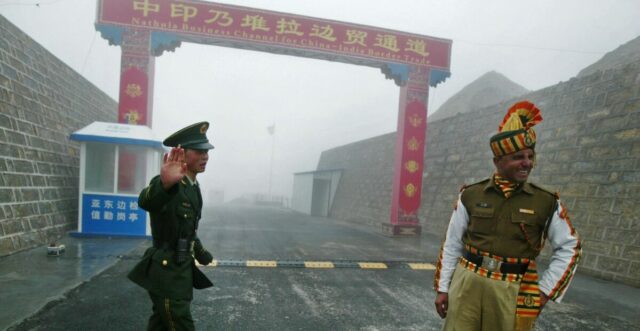Xinjiang, a vast and diverse area in northwestern China, has historically been at the crossroads of India and Central Asia due to its strategic location along the ancient Silk Road. Xinjiang has been amalgamated by its language and culture as well.
However, with China trying to change the geopolitical narrative and advocating for the restoration of territories and regions based on ethnic and historical claims on Tibet, Xinjiang, Arunachal Pradesh, and the South China Sea, its assertion often diverges significantly from the historical accounts maintained by independent historians, particularly regarding Xinjiang and Tibet.
The Communist Party of China has systematically manipulated the ethnic and religious history of these regions over the years.
India and Xinjiang, though distinct today, share deep historical connections. As part of the ancient Silk Route, India significantly influenced the religious and cultural landscape of Xinjiang and Tibet.
The historical connections depict the evidence of the Kushan kingdom in the Tarim Basin. It is believed that the Kushan king Kaniska’s kingdom, stretched from Bukhara (now in Uzbekistan) in the west to Patna in eastern India, and from the Pamirs (now in Tajikistan) in the north to central India in the south.
His capital was likely Purusapura (modern Peshawar, Pakistan) and he may have conquered city-states like Khotan, Kashgar, and Yarkand (in present-day Xinjiang).. This allowed the Kushans to control important trade routes to China that passed through these regions and the connection can be seen as a facilitator in the spread of Buddhism from India to Central Asia and China.
During this rule, a direct road from Gandhara to China remained under Kushan control for over a century.
Buddhism entered Han China via the Silk Road in the 1st or 2nd century CE, largely due to translation efforts during Kushan rule. Sarvastivadan (a school of Hinayana Budhhism) and Tamrashatiya Buddhism spread across East Asia, while Theravada Buddhism developed from the Pāli Canon in Sri Lanka.
Direct contact between Central Asian and Chinese Buddhism continued through the Tang period, with pilgrims like Faxian and Xuanzang travelling to India to study the scriptures. Although Silk Road trade declined with the rise of Muslim conquests and Indian Buddhism diminished, various Buddhist traditions persist in China and other Asian countries.
The Silk Road in Central Asia stretched from Rome to India, navigating around the vast deserts of the Taklamakan and Gobi, and passing through the regions of Kashmir, Karakoram, and the Hindukush. The influence of Indian art and architecture is evident in Xinjiang’s Buddhist cave temples and murals. Sites such as the Kizil Caves and Bezeklik Caves in the Turpan region showcase Indian artistic traditions, reflecting the fusion of Indian and Central Asian styles.
These cultural exchanges illustrate how Indian culture permeated the region through trade and religious missions.
India’s cultural impact can be seen in the oasis cities of the Silk Road like Karasahr and Turpan. Karasahar, originally known as Arshi in the Tocharian language, is an ancient town in Xinjiang.
As the populations in the Tarim Basin underwent conversion to Buddhism and, consequently, linguistic influence from Indo-Iranian languages, such as Pali, Sanskrit, Bactrian, Gandhari and Khotanese (Saka) came into effect. The city of Arshi became commonly known as Agni, almost certainly derived from the Sanskrit meaning ‘fire’.
Similarly, Turpan’s architecture, characterized by Indian styles and Buddhist influences, underscores the cultural legacy left by Indian traders and monks.
The city of Hotan (formerly Khotan) also bears significant Indian influence. According to historical records, Kustana, a son of Ashoka, founded the Khotan Dynasty. The Sanskrit origin of Hotan’s name, Godaniya, and its evolution into Kho-tan, reflects the linguistic and cultural exchanges that occurred.
When Faxian and Xuanzhang visited Khotan in the early fifth and mid-seventh centuries respectively, Khotan was a major centre of Mahayana Buddhism, with numerous large monasteries housing tens of thousands of monks. It is known from the Buddhist and other texts found in Khotan that from the 6th to the 10th century, the local population spoke Khotanese, a Middle Iranian language belonging to the Indo-European family.
Another ancient Buddhist Kingdom, Kucha was located on the Silk Route that ran along the northern edge of what is now the Taklamakan Desert. The history of place names for modern Kucha is somewhat unclear. However, it’s evident that the names Kucha, Kuchar (in Turkic languages), and Kuché (in modern Chinese) are related to the ancient Kushan people. These names correspond to the Kushan referenced in Indic scripts from late antiquity.
Indian influence in the region is evident as the well-known Buddhist monk and translator Kumarajiva was from Kucha, and the Hinayana and Mahayana sects of Buddhism both existed side by side here. Some rulers of the Kucha kingdom also bore Sanskrit names such as Suvarnapuspa, Suvarnadeva, Haripuspa and Anandavarman.
India’s historical and cultural influence in Xinjiang is profound and well-documented. The role of Indian culture in shaping religious and cultural practices in these regions is significant, from the spread of Buddhism to the transmission of artistic and linguistic traditions.
China’s Sinicization efforts are part of its broader Three Warfare Strategy, aimed at shaping perceptions domestically and internationally, and achieving territorial ambitions. As China continues to assert its territorial claims based on revised historical narratives, it is crucial for India to advocate for accurate historical representation.
A nuanced understanding of the historical and cultural connections between India and Xinjiang is essential in countering the distorted narratives promoted for political gain.
















